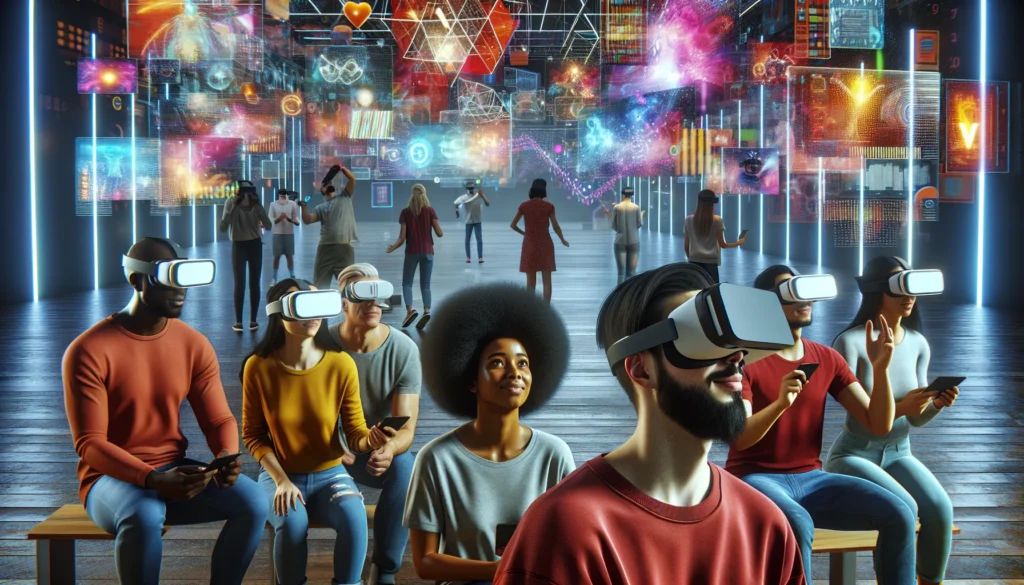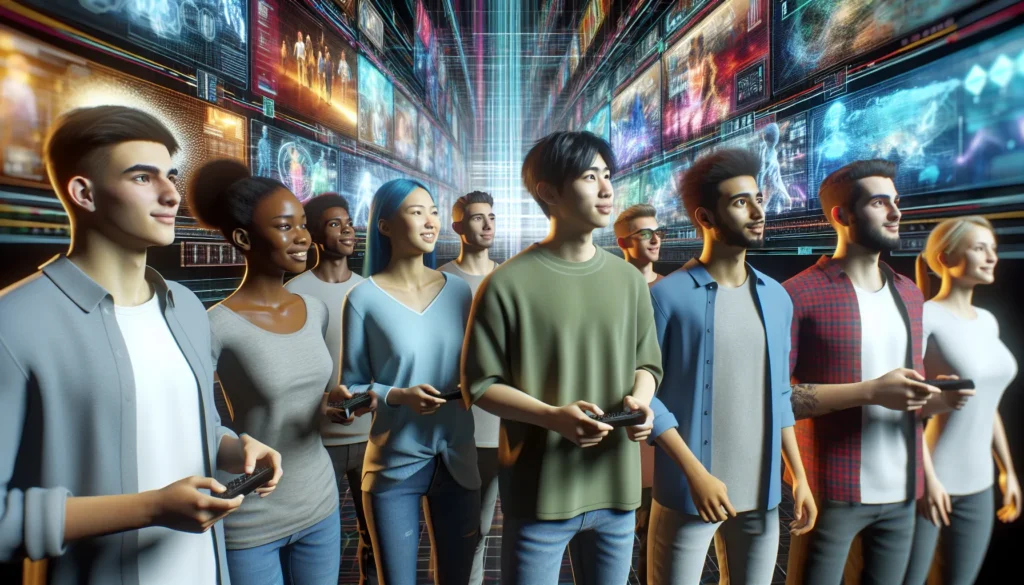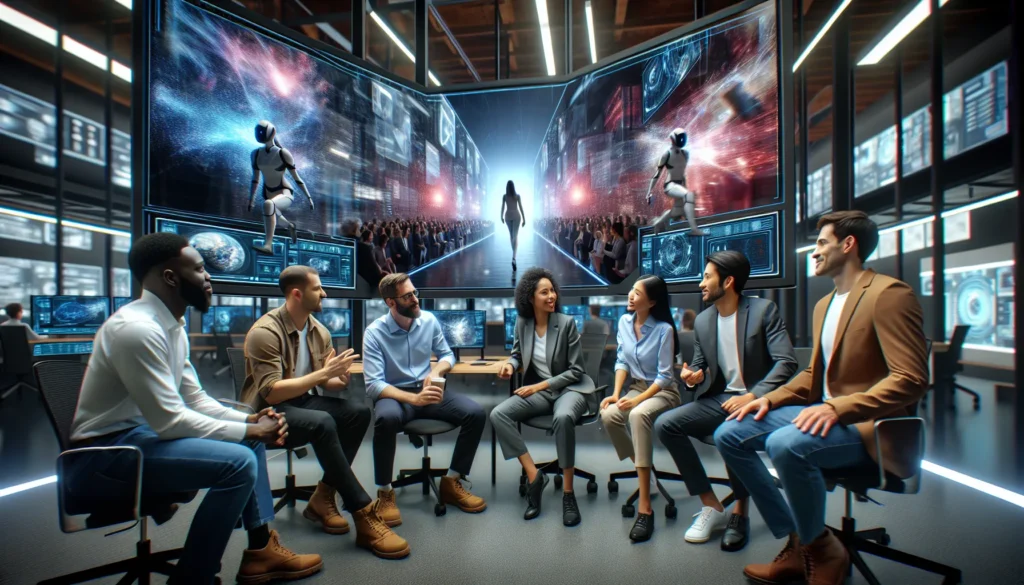Imagine a world where marketing transcends screens and enters immersive virtual spaces. That’s the promise of metaverse marketing, a rapidly emerging frontier that’s reshaping how businesses connect with their audiences. While digital marketing has long been the go-to strategy for reaching consumers online, the metaverse offers a whole new dimension of interaction and engagement.
You’re probably familiar with digital marketing—social media ads, email campaigns, and SEO strategies dominate this space. But how does it compare to the metaverse, where brands can create virtual worlds, host events, and offer interactive experiences? Understanding the key differences between these two approaches is essential for staying ahead in today’s fast-evolving marketing landscape.
Whether you’re curious about the potential of the metaverse or looking to refine your digital marketing strategy, exploring these distinct yet interconnected realms will give you the insights needed to thrive in the future of marketing.
Understanding Metaverse Marketing
Metaverse marketing integrates immersive virtual environments into brand engagement strategies. This approach prioritizes interactivity, personalized experiences, and unique digital assets.
Key Features Of Metaverse Marketing
- Immersive Experiences: Users explore branded virtual spaces, such as 3D shopping environments or digital gaming zones, enhancing engagement and customer interaction.
- Interactivity: Real-time interactions, including events, games, and live product demonstrations, create deeper connections between brands and their audiences.
- Digital Ownership: Leveraging non-fungible tokens (NFTs), brands offer exclusive items like digital fashion, collectibles, or loyalty rewards to boost customer value.
- Personalization: AI and data analytics tailor content and experiences to individual preferences, improving relevance and user satisfaction within the virtual world.
Technologies Driving Metaverse Marketing
- Virtual Reality (VR) and Augmented Reality (AR): VR provides fully immersive experiences for users, while AR overlays digital elements onto the physical world, expanding marketing possibilities.
- Blockchain: Ensures secure ownership and transfer of NFTs, virtual real estate, and other metaverse-based assets.
- Artificial Intelligence (AI): Enhances customer interactions through virtual assistants, chatbots, and hyper-personalized content recommendations.
- 5G Connectivity: Supports seamless, real-time metaverse experiences with high-speed, low-latency internet capabilities.
- Game Engines: Platforms like Unreal Engine or Unity enable the creation of lifelike virtual worlds and visually immersive brand spaces.
Exploring Digital Marketing

Digital marketing focuses on promoting products or services through digital channels. It leverages online platforms to reach and engage targeted audiences with measurable results.
Key Features Of Digital Marketing
- Wide Reach Across Platforms
Digital marketing enables access to vast global audiences through social media, search engines, and email. Platforms like Google, Facebook, and Instagram offer tools to connect with a diverse range of users.
- Performance Tracking And Analytics
Precise measurement tools, such as Google Analytics, track metrics like click-through rates (CTR), conversion rates, and return on investment (ROI). Real-time insights help refine strategies effectively.
- Cost-Effective Advertising
Compared to traditional marketing, digital campaigns on platforms like Google Ads or Facebook Ads provide lower-cost solutions for targeting specific demographics.
- Targeted Campaigns
Segment audiences by age, location, interests, or browsing behavior to deliver personalized content. Tools like Facebook Audience Insights optimize targeting.
- Multi-Channel Integration
Digital marketing combines email, content marketing, social media, and PPC (Pay Per Click) advertising into coherent strategies that maximize customer touchpoints.
Popular Techniques In Digital Marketing
- Search Engine Optimization (SEO)
SEO improves website visibility in search engine result pages (SERPs) using keyword optimization, quality backlinks, and high-value content creation to drive organic traffic.
- Pay Per Click (PPC) Advertising
Platforms like Google Ads or Bing Ads charge per click, allowing advertisers to bid for ad placement and drive immediate traffic to websites.
- Content Marketing
Content creation such as blogs, videos, and infographics educates and engages audiences. Valuable content builds trust and encourages both engagement and conversions.
- Social Media Marketing
Social platforms like Instagram, LinkedIn, and TikTok promote brand awareness, drive direct sales, and foster customer relationships through interactive posts or paid campaigns.
- Email Marketing
Newsletters, promotions, and personalized emails nurture leads and retain customers. Tools like Mailchimp automate email campaigns for better reach and efficiency.
- Affiliate Marketing
Using partnerships, affiliate marketing drives traffic and conversions by compensating partners for referrals or sales, often through commission-based structures.
Metaverse Marketing Vs Digital Marketing: Key Differences

Metaverse marketing and digital marketing differ significantly in their approaches, technologies, and audience engagement strategies. Understanding these differences helps you determine which approach aligns better with your business objectives.
Audience Engagement
Metaverse marketing prioritizes immersive, interactive experiences. It engages users through virtual environments, real-time events, and interactive branded spaces. Examples include hosting product launches in a virtual world or creating branded VR experiences. This deeper level of interaction fosters stronger emotional connections with your audience.
Digital marketing, on the other hand, focuses on broad audience reach through traditional online channels like social media, email, and websites. Techniques like content marketing and SEO attract users, while personalized ads and email campaigns maintain engagement. For example, tailored Facebook ads target specific audience segments based on their behavior and interests.
Cost And Scalability
Metaverse marketing involves higher upfront investments, especially in creating virtual spaces, developing AR/VR experiences, and acquiring digital assets like NFTs. These costs make scalability more complex, as expanding efforts requires significant resources and technical infrastructure. Large brands may find this approach more feasible due to their budgets.
Digital marketing provides cost-effective scalability. Campaigns can start small on platforms like Google Ads and grow as needed. Budget adjustments are easy, and cost-per-click or impression models suit businesses with varying resources. This flexibility makes digital marketing accessible to startups, small businesses, and enterprises alike.
Innovations And Trends
Metaverse marketing thrives on emerging technologies. It integrates developments in blockchain, AI, and game engines to deliver cutting-edge experiences. For instance, creating branded spaces in platforms like Decentraland reflects these innovations, making your brand stand out in a competitive market.
Digital marketing remains adaptive but focuses on optimizing existing technology. Trends include advancements in AI-driven analytics, voice search optimization, and programmatic advertising. These innovations enhance campaign efficiency and audience targeting but lack the immersive depth of metaverse experiences. Examples include chatbots for customer service or voice-optimized content for smart speakers.
Benefits Of Combining Both Strategies

Integrating metaverse marketing with digital marketing creates synergies that enhance customer interaction, expand audience reach, and drive innovation. Combining these approaches strengthens brand presence across traditional and emerging platforms.
Enhanced Customer Experience
Using both strategies elevates user engagement and personalization. Metaverse marketing immerses customers in interactive, branded virtual environments that evoke stronger emotional connections. Meanwhile, digital marketing reinforces this engagement through personalized email campaigns, targeted ads, and content that complements metaverse experiences. Together, these methods create a unified, customer-centric approach that drives deeper loyalty and satisfaction.
Broader Market Reach
Mixing metaverse and digital marketing extends your audience by leveraging multiple channels. Digital marketing’s wide reach ensures visibility through search engines, social media, and email, while metaverse marketing targets tech-savvy users keen on virtual experiences. This dual approach caters to diverse demographics, from digitally active customers engaging on social media to those exploring immersive virtual worlds, maximizing brand exposure across segments.
Conclusion
As the marketing landscape evolves, embracing both metaverse and digital marketing can position your brand for long-term success. Each approach offers unique strengths that cater to different audience needs and technological advancements. By leveraging the immersive potential of the metaverse alongside the proven effectiveness of digital marketing, you can create a powerful, future-ready strategy.
Staying adaptable and open to innovation is key. Whether you’re engaging customers in virtual worlds or optimizing campaigns across digital platforms, the right blend of these strategies can elevate your brand’s visibility, interaction, and impact.
Frequently Asked Questions
What is metaverse marketing?
Metaverse marketing is a strategy that incorporates immersive virtual environments to engage audiences through interactive experiences. It often involves virtual spaces, events, and digital ownership using technologies like VR, AR, NFTs, and AI.
How does metaverse marketing differ from digital marketing?
Metaverse marketing focuses on creating interactive and immersive experiences, relying on advanced technologies. Digital marketing, on the other hand, emphasizes broad reach using channels like social media, email, and SEO.
What are the benefits of metaverse marketing?
Key benefits include enhanced audience engagement, unique brand experiences, personalized interactions using AI, and innovative opportunities with digital assets like NFTs.
What technologies power metaverse marketing?
Core technologies include Virtual Reality (VR), Augmented Reality (AR), blockchain, AI, 5G connectivity, and game engines like Unity or Unreal Engine.
What is digital marketing?
Digital marketing leverages online channels like SEO, PPC ads, social media, and email to promote products/services. It focuses on reach, cost-effective campaigns, and audience analytics.
Should small businesses consider metaverse marketing?
Metaverse marketing typically requires significant investment, making it more suitable for larger brands. However, small businesses can explore aspects like NFTs or simple virtual experiences.
Can digital marketing and metaverse marketing work together?
Yes, combining both can create powerful synergies. Digital marketing supports broad reach and targeted campaigns, while metaverse marketing enhances interactivity and emotional engagement.
What are NFTs in metaverse marketing?
NFTs (non-fungible tokens) are unique digital assets used in the metaverse for ownership, branding, and creating loyalty programs. They allow businesses to offer exclusive virtual products and experiences.
Is metaverse marketing the future of advertising?
Metaverse marketing represents a growing trend, especially for brands targeting tech-savvy and younger audiences. However, digital marketing remains essential for broad accessibility today.
How can businesses get started with metaverse marketing?
To start, businesses should explore technologies like VR, AR, and game engines. They can create virtual spaces, host live events, or use NFTs to engage customers innovatively in the metaverse.

